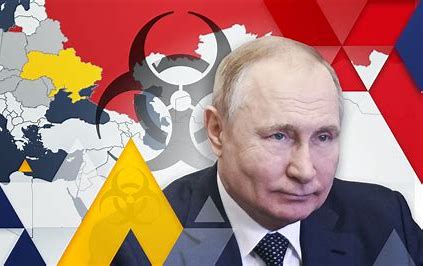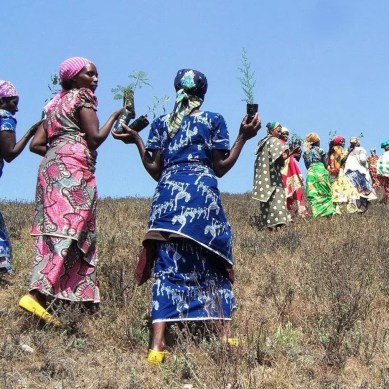
US president Joe Biden has warned there are clear signs that Russia is considering the use of biological and chemical weapons in Ukraine. These included the fact that Russian President Vladimir Putin has falsely accused Ukraine of hosting its own such weapons, he said, suggesting Russia could release chemical weapons and blame the attack on Ukraine.
The Russian shelling of the Sumykhimprom chemical plant in Sumy, Ukraine, on March 21, which released ammonia in the area and forced locals to stay indoors, points to one way Russia may escalate the conflict in Ukraine: both by causing chemical contamination without using chemical weapons and as a way to manufacture excuses for its own use of chemical agents.
Ammonia is a common industrial chemical used for making nitrate fertiliser. The giant Sumykhimprom plant, spread over 226 hectares, produces over 120,000 tonnes of fertiliser a year. Gaseous ammonia is highly irritant and corrosive and exposure to high concentrations can cause blindness, lung damage and death.
Days before the attack on Sumykhimprom, Russia claimed that Ukraine was planning to release dangerous chemicals from the plant.
“Nationalists have placed mines in ammonia and chlorine storage facilities at the Sumykhimprom chemical plant in Sumy in order to poison the Sumy region residents in case Russian troops enter the city,” Mikhail Mizintsev, chief of Russia’s National Défense Management Centre, told the Russian state news agency Tass on March 19.
“The excuse is flimsy,” says defence analyst Zak Kallenborn at George Mason University in Virginia. “Ammonia is not a traditional chemical weapons agent; ammonia is not a very effective chemical weapons agent and the Russian shelling provides an obvious alternative explanation. But flimsy excuses do not seem to have stopped Russia before.”
Attacking storage sites could be the start of a systematic campaign of a form of chemical warfare. Wim Zwijnenburg of disarmament group PAX, based in the Netherlands, says there are some 24,000 potentially hazardous sites in Ukraine.
“In Donbas alone, there are 4,000 potentially hazardous sites in or near urbanised areas,” says Zwijnenburg. “Some of these locations include abandoned coal mines storing radioactive and toxic waste. To keep the locations safe, groundwater has to be pumped out to prevent these mines from flooding, yet damage to power plants and electricity networks could stop the water pumping systems, and flood these mines.”
Zwijnenburg says that in Donbas there was a hotline between local, Russia-backed separatists and Ukrainian forces to prevent shelling of environmentally sensitive sites. The Russian invading force doesn’t seem to have made any such provision, he says.
If the situation escalates, Russia might also decide to deploy chemical weapons rather than merely attacking hazardous sites. All publicly declared Russian stockpiles of chemical weapons were destroyed by 2017 as part of the international Chemical Weapons Convention, but incidents like the use of the nerve agent Novichok in Salisbury, UK, in 2018 show that Russia does still possess such weapons.
Robert Bunker at Californian security consultancy firm C/O Futures says that such weapons might be used in Russia’s attempts to take Ukrainian cities that have so far proved resistant. Salvos of rockets could deliver nerve agents over selected areas, killing residents and defenders alike.
“Weather conditions and winds would have to be calculated by the Russian troops who would then advance once the nerve agent had dissipated,” says Bunker, noting that the Russians would also be at risk unless they had adequate protective gear. Some Russian soldiers have been seen with gas masks, accompanied by special vehicles seemingly fitted with sensors for chemical agents.
Even if there is no actual use of chemical weapons, deliberate targeting of more sensitive sites could create a series of environmental disasters across Ukraine.
“What is urgently needed is more systematic identification and monitoring of environmental damage linked with conflict, and additional international expertise and funding made available to assess and remediate conflict-pollution hotspots,” says Zwijnenburg.
- A Nature report











